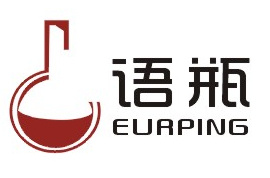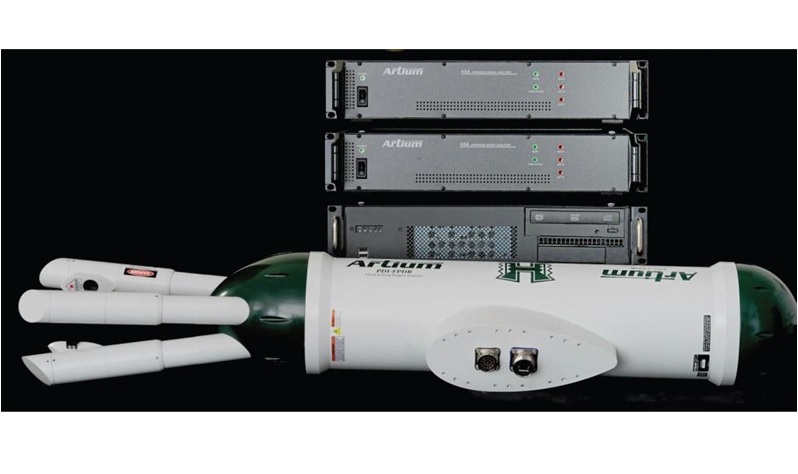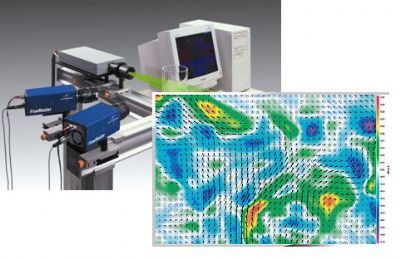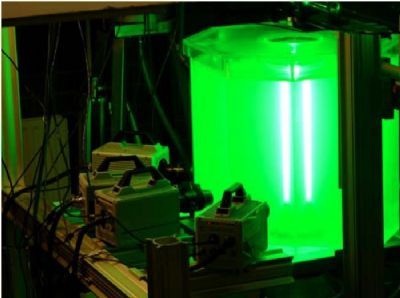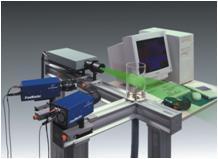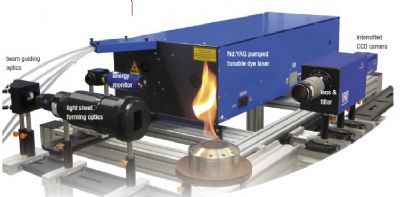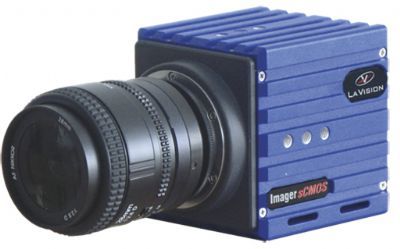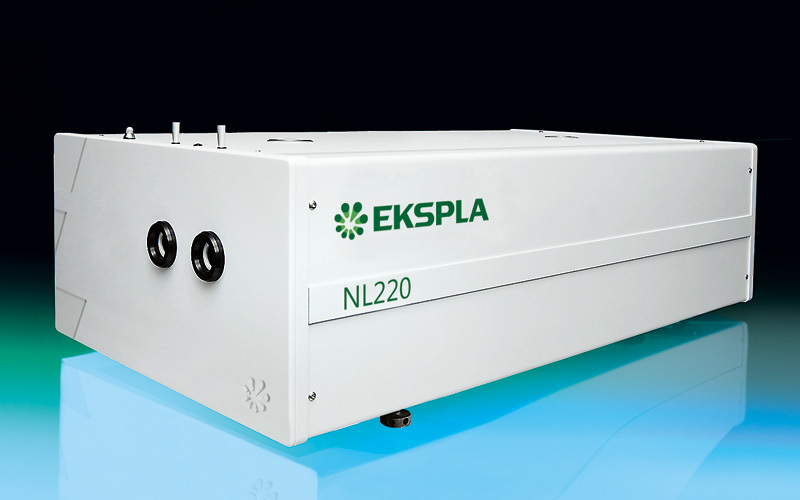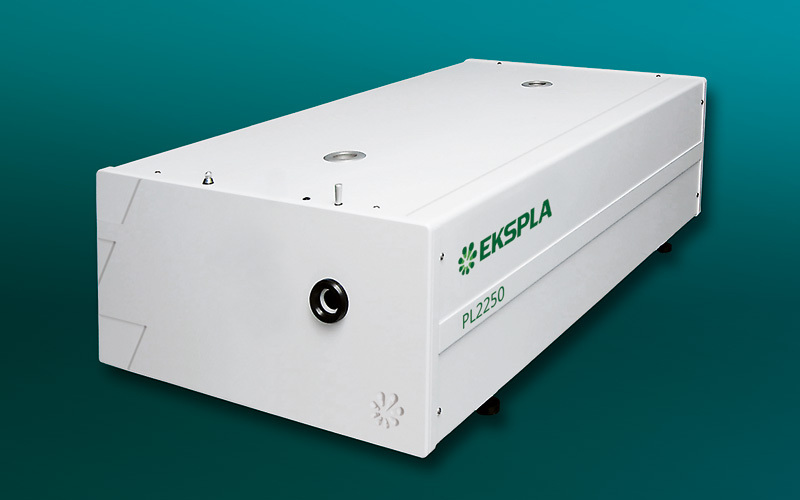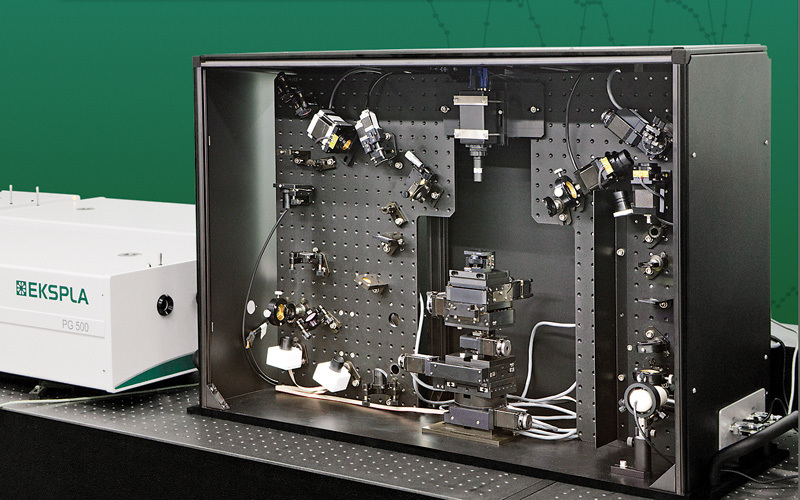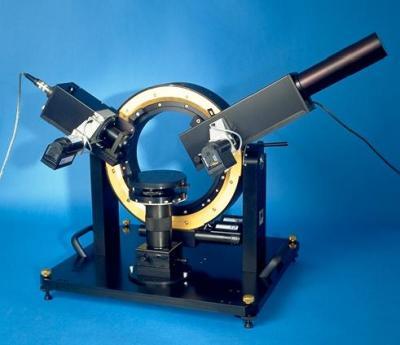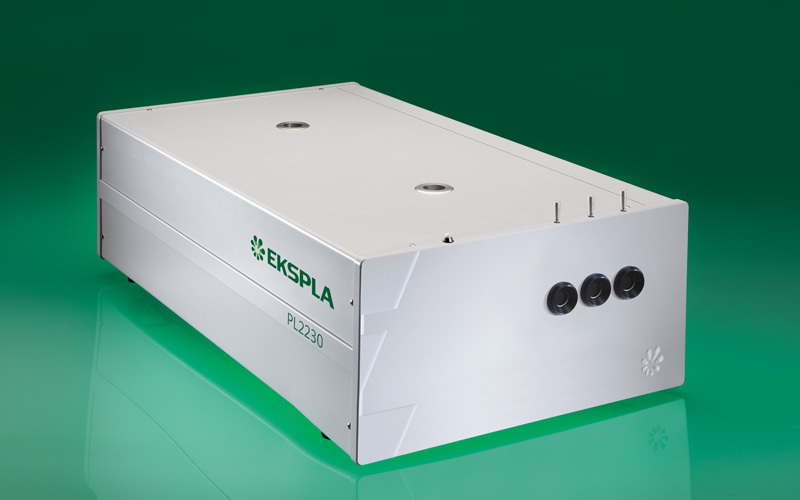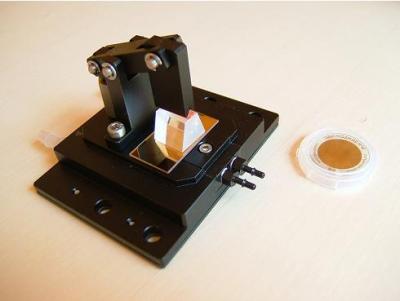云微观物理特性中液滴粒径,液滴速度,液态水含量检测方案(气溶胶)
High-level Nitrogen oxides (NOx) released to the atmosphere cause health and environmental hazards. Conventional power plants are required to have NOx emission control systems to abide by local environmental regulations. Com-mon post-combustion techniques include selective non-catalytic reduction (SNCR) or selective catalytic reduction (SCR) techniques. SNCR is a proven technology that can be implemented virtually without affecting existing indus-trial operations with low capital cost. SNCR is a method involving either aqueous ammonia or urea as the reagent injected into flue gas in the boiler/furnace within specific temperature range. This method commonly reduces the emission of NOx by 30-50%. However, high reductions can be achieved by system optimization. Placement within the proper temperature window, distribution within the cross section and residence time of reagent significantly in-fluence performance of an SNCR system. Therefore, spray lance and nozzle design is crucial for assurance of oper-ating efficiency and ammonia utilization.
In this paper, an SNCR system in a circulating fluidized bed (CFB) boiler was studied with using Computational Fluid Dynamics (CFD) simulations, as it relates to spray technology. The simulation solves Navier-Stokes equa-tions with heat and mass transfer using ANSYS Fluent SNCR model with Lagrangian multiphase models and spe-cies transport model. CFD was used to diagnose the gas phase behavior and thermal distribution, to determine opti-mal spray placement and maximum penetration. The focus of this work was the parameters of the injection, which were determined based on test data acquired through in-house laboratory equipment. Temperature profile, pollutant reduction, ammonia slippage and wall impingement were used from the CFD results to assist determining the best spray design to achieve the greatest efficiency.
检测样品:
其他
检测项:
液滴粒径,液滴速度,液态水含量
北京欧兰科技发展有限公司
查看联系电话
前往展位
循环流化床,喷雾中液滴粒径,液滴速度检测方案(气溶胶)
High-level Nitrogen oxides (NOx) released to the atmosphere cause health and environmental hazards. Conventional power plants are required to have NOx emission control systems to abide by local environmental regulations. Com-mon post-combustion techniques include selective non-catalytic reduction (SNCR) or selective catalytic reduction (SCR) techniques. SNCR is a proven technology that can be implemented virtually without affecting existing indus-trial operations with low capital cost. SNCR is a method involving either aqueous ammonia or urea as the reagent injected into flue gas in the boiler/furnace within specific temperature range. This method commonly reduces the emission of NOx by 30-50%. However, high reductions can be achieved by system optimization. Placement within the proper temperature window, distribution within the cross section and residence time of reagent significantly in-fluence performance of an SNCR system. Therefore, spray lance and nozzle design is crucial for assurance of oper-ating efficiency and ammonia utilization.
In this paper, an SNCR system in a circulating fluidized bed (CFB) boiler was studied with using Computational Fluid Dynamics (CFD) simulations, as it relates to spray technology. The simulation solves Navier-Stokes equa-tions with heat and mass transfer using ANSYS Fluent SNCR model with Lagrangian multiphase models and spe-cies transport model. CFD was used to diagnose the gas phase behavior and thermal distribution, to determine opti-mal spray placement and maximum penetration. The focus of this work was the parameters of the injection, which were determined based on test data acquired through in-house laboratory equipment. Temperature profile, pollutant reduction, ammonia slippage and wall impingement were used from the CFD results to assist determining the best spray design to achieve the greatest efficiency.
检测样品:
其他
检测项:
液滴粒径,液滴速度
北京欧兰科技发展有限公司
查看联系电话
前往展位
水液滴中液滴直径,液滴速度检测方案(气溶胶)
During the course of a hypothetical severe accident in a nuclear Pressurized Water Reactor (PWR),
hydrogen may be produced by the reactor core oxidation and distributed into the containment. Spray
systems are used in order to limit overpressure, to enhance the gas mixing to avoid hydrogen
accumulation, and to wash out the fission products. In order to simulate these phenomena with CFD
codes, it is first necessary to know the droplet size and velocity distributions close to the outlet nozzle.
Furthermore, since most of the phenomena relative to droplets (condensation, gas entrainment,
collision) are of particular importance in the region below the nozzle, accurate input data are needed
for real-scale PWR calculations. The objective is therefore to determine experimentally these input
data.
Experimental measurements were performed on a single spray nozzle which is routinely used in many
PWRs. This nozzle is generally used with water at a relative pressure supply of 350 kPa, producing a
mass flow rate of approximately 1 kg/s. At a distance of 20 cm, where atomization is just achieved, it
is found that geometric mean diameter varies from 305 to 366 μm, Sauter mean diameter from 430 to
600 μm and mean axial velocity from 14.1 to 18.4 m/s.
检测样品:
其他
检测项:
液滴直径,液滴速度
北京欧兰科技发展有限公司
查看联系电话
前往展位
喷雾,液滴中粒径、速度检测方案(气溶胶)
During the course of a hypothetical severe accident in a nuclear Pressurized Water Reactor (PWR),
hydrogen may be produced by the reactor core oxidation and distributed into the containment. Spray
systems are used in order to limit overpressure, to enhance the gas mixing to avoid hydrogen
accumulation, and to wash out the fission products. In order to simulate these phenomena with CFD
codes, it is first necessary to know the droplet size and velocity distributions close to the outlet nozzle.
Furthermore, since most of the phenomena relative to droplets (condensation, gas entrainment,
collision) are of particular importance in the region below the nozzle, accurate input data are needed
for real-scale PWR calculations. The objective is therefore to determine experimentally these input
data.
Experimental measurements were performed on a single spray nozzle which is routinely used in many
PWRs. This nozzle is generally used with water at a relative pressure supply of 350 kPa, producing a
mass flow rate of approximately 1 kg/s. At a distance of 20 cm, where atomization is just achieved, it
is found that geometric mean diameter varies from 305 to 366 μm, Sauter mean diameter from 430 to
600 μm and mean axial velocity from 14.1 to 18.4 m/s.
检测样品:
其他
检测项:
粒径、速度
北京欧兰科技发展有限公司
查看联系电话
前往展位
喷雾,致密喷雾中液滴粒径,液滴速度检测方案(气溶胶)
In this work the authors have added an additional sensor to the traditional Phase Doppler Interferometry (PDI) configuration yielding three independent measures of phase shift between detectors. This seemingly minor enhance-ment has a profound impact on the limitations of the PDI technique in two important areas: the minimum laser beam diameters and the ability of the technique to discriminate liquid droplets from solid particles.
Phase Doppler measurements can be impacted by reflection/refraction errors in which a droplet’s measured diameter is substantially different from its actual size. This is most critical when small droplets are measured as very large but the converse is possible as well. Consideration for this error source places a major constraint on the minimum laser beam diameter at the measurement volume. The addition of a third independent measure of phase shift effectively eliminates reflection/refraction errors allowing PDI measurements with smaller laser beams than would ordinarily be recommend-ed. The authors demonstrate this ability by measuring the same location of a spray with decreasing laser beam waists. Since the droplet number density limit of the Phase Doppler technique scales inverse to the square of the laser beam diameter, such an optical configuration would substantially enhance the instrument’s performance in dense sprays ap-plications.
For applications such as icing cloud measurements, the ability to discriminate and size only liquid droplets in a mixed-phase environment is an important capability of the PDI technique. The relationship between the phase shifts of Phase Doppler signals can be used to differentiate liquid droplets or other spherical particles from irregularly-shaped solids. The authors demonstrate that the addition of a third independent measure of phase shift reduces the number of false positives (solids measuring as droplets) by a large factor – from 11.7% to 0.33% in one example.
检测样品:
其他
检测项:
液滴粒径,液滴速度
北京欧兰科技发展有限公司
查看联系电话
前往展位
微观水滴中表面张力,液滴粒径,液滴速度检测方案(气溶胶)
The ability of airborne particles to take up water may be
enhanced by surface-active components, but the importance
of this effect is controversial because direct measurement of
the surface tension of microscopic droplets has not been possible.
Here we infer droplet surface tension from water
uptake measurements of mixed organic-inorganic particles
at relative humidities just below saturation (99.3–99.9%).
The surface tension of droplets formed on particles composed
of NaCl and a-pinene ozonolysis products was
reduced by 50–75%, but only when enough organic material
was present to form a film on the droplet surface at least
0.8 nm thick. This study suggests that if atmospheric particles
are predominantly (?80%) composed of surface-active
material, their influence on cloud properties and thus climate
could be enhanced, and their atmospheric lifetimes could be
reduced. Citation: Ruehl, C. R., P. Y. Chuang, A. Nenes, C. D.
Cappa, K. R. Kolesar, and A. H. Goldstein (2012), Strong evidence
of surface tension reduction in microscopic aqueous droplets,
检测样品:
其他
检测项:
表面张力,液滴粒径,液滴速度
北京欧兰科技发展有限公司
查看联系电话
前往展位
水流中流场,漩涡检测方案
The three-dimensional behavior of flow transition in circular and 6-chevron jets at Re?000 is
investigated with experiments conducted on a free water jet by time-resolved tomographic particle
image velocimetry. The emphasis is on the unsteady organization of coherent flow structures,
which play a role in the generation of acoustic noise. Shedding and pairing of vortices are the most
pronounced phenomena observed in the near field of the circular jet. The first and second pairing
amplify the axial pulsatile motion in the jet column and lead to the growth of azimuthal waves
culminating in the breakup of the vortex ring. Streamwise vortices of axial and radial vorticity are
observed in the outer region and move inward and outward under the effect of the vortex rings. In
the jet with chevrons, the axisymmetric ring-like coherence of the circular jet is not encountered.
Instead, streamwise flow structures of azimuthal vorticity emanate from the chevron apices, and
counter-rotating streamwise vortices of axial and radial vorticity develop from the chevron notches.
The decay of streamwise vortices is accompanied by the formation of C-shaped structures. The
three-dimensional analysis allows quantifying the vortex stretching and tilting activity, which, for the
circular jet exit, is related to the azimuthal instabilities and the streamwise vortices connecting the
vortex rings. In the chevron jet, stretching and tilting peak during the formation of C-structures.
Following Powell抯 aeroacoustic analogy, the spatial distribution of the source term is mapped,
evaluating the temporal derivative of the Lamb vector. The spatio-temporal evolution of such source
term is visualized revealing that the events of highest activity are associated with the processes of
vortex-ring pairing and vortex-ring disruption for the circular jet, and with the decay of streamwise
instabilities and the formation of C-shaped structures for the chevron case.
检测样品:
其他
检测项:
流场,漩涡
北京欧兰科技发展有限公司
查看联系电话
前往展位
瞬态平面压力中瞬态平面压力检测方案
Forces on flapping or rotating wings, like flapping wings of micro air
vehicles or blades of wind turbines are of great interest to engineers.
To investigate the ways birds and insects fly, forces created by flapping
wings are of importance to biologists. The pressure field, combined
with the velocity field, gives a complete description of the (incompressible)
flow dynamics. Furthermore the pressure field is the main contributor
to the aerodynamic loading of bodies immersed in the fluid.
Traditional techniques to determine pressure and forces rely on the
determination of surface pressure and integral loads by point pressure
and force balance measurements. In situations where it is difficult (or
impossible) to instrument the body, using particle image velocimetry
(PIV) velocity data to determine forces and pressure poses an interesting
alternative to the existing approaches to determine sectional loading.
检测样品:
其他
检测项:
瞬态平面压力
北京欧兰科技发展有限公司
查看联系电话
前往展位
流体,喷雾,喷嘴中速度场检测方案
Experimental velocity measurements of a low-speed jet, performed using time-resolved
tomographic PIV, are used to study the dynamics of large-scale structures and their sound
radiation. The experimental results show the roll-up of axisymmetric vortices that pair
downstream, and subsequently lose their azimuthal coherence. Models of linear instability
waves using both steady laminar and mean-field base flows flow are applied. While good
agreement can be obtained for the vortex roll-up frequency in the near-nozzle region using
the laminar base flow, non-linear effects must be included, via the mean field, in order
to capture the downstream evolution of both the fundamental and subharmonic (vortex
pairing). The velocity fluctuations for both frequencies have a wave-packet structure with
some jitter in the form of modulations of the spatial extent and amplitude of the envelope.
The sound radiation is modelled using a jittering wave-packet model, an shows agreement
with the exponential directivity shape of Laufer and Yen (J. Fluid Mech. 134, 1983).
检测样品:
其他
检测项:
速度场
北京欧兰科技发展有限公司
查看联系电话
前往展位
预混和旋流燃烧器回火现象高速激光成像研究
Energy supply is one of the primary building blocks of our society. Worldwide, and especially in
rapidly developing countries, e.g. China and India, the demands of energy for housing, industry,
transportation and communication are constantly increasing [83]. The global energy supply is
currently dominated by combustion of fossil fuels. In 2008, 85.1% of the global primary energy
supply was produced from the combustion of oil (34.6%), coal (28.4%) and natural gas (22.1%).
From the 12.4% of renewable energy sources, 82% (in total 10.2%) was bioenergy based on
burning renewable rescources [45]. Recent reports confirm that a dramatic shift towards CO2
neutral energy supply is required to stop the current trend of global warming [135]. Nevertheless,
the slow developement of renewable energies over the last decades as well as the absence of
large technological advancements in nuclear fusion technology indicate that this structure will
not substantially change in the coming decades.
Besides emissions of CO2, further pollutants are formed during the combustion of fossil or
biofuels. From these emissions, nitric oxides (NOx) have been identified as a major problem
of practical combustion processes [214]. In the recent decades nitric oxides became a significant
contributor to photochemical smog and ozone in urban air [180]. It further participates
in the chain reaction removing ozone form the stratosphere with the consequence of increased
ultraviolet radiation reaching earth’s surface [90]. NOx is generally formed during the oxidation
process of nitrogen containing fuels such as coal and oil. However, the gross NOx emissions
are created at high combustion temperatures from nitrogen in the air. These are typical for hard
coal plants, internal combustion engines and gas turbines. Hence, it is essential to understand
the physico-chemical processes of NOx formation and concepts to reduce or even eliminate NOx
emissions.
检测样品:
其他
检测项:
北京欧兰科技发展有限公司
查看联系电话
前往展位
流体中速度矢量场,漩涡结构检测方案
The flow behind a backward facing step of 6 mm in height has been investigated by means of highresolution
tomographic PIV. The shedding of vortices was stabilized by acoustic excitation, enabling phaselocked
measurements of the flow field in a volume of 70x95x7 mm3. The gathered vector volumes with a
vector spacing of approx. 0.25 mm in each direction were investigated by the method of conditional
averaging. Basic flow structures, related to Q2 and Q4-events were extracted and their development in time
was characterized, using methods of joint probability density functions of the fluctuations and of the
invariants of the velocity gradient tensor.
检测样品:
其他
检测项:
速度矢量场,漩涡结构
北京欧兰科技发展有限公司
查看联系电话
前往展位
流体轨迹相关方法中提高时间分辨PIV测量的速度动态范围和精度检测方案
A novel method is introduced for increasing the accuracy and extending the dynamic range of
time-resolved PIV. The approach extends the well-known concept of multiframe particle tracking
velocimetry (PTV) to cross-correlation analysis employed by PIV. The working principle is based on the
determination of fluid element trajectories by tracking their position across an image sequence. The fluid
trajectory correlation (FTC) algorithm deals with the effect of trajectory curvature and non-uniform velocity
during the considered time interval by allowing the motion within the trajectory to be nonlinear. In addition,
the local image deformation accounts for the spatial velocity gradient and its change along the trajectory.
The principle for reduction of the measurement error is threefold: by enlarging the temporal
measurement interval, the relative error becomes smaller; secondly, the random error is reduced with the use
of a least-squares polynomial fitting approach to the individual trajectory; and finally, the use of nonlinear
fitting functions allows for a reduction in truncation errors. The evaluation of velocity proceeds then directly
from the analytical derivatives of the least-squares functions. The principal features of this algorithm are
compared with a single-pair iterative image deformation method through the use of synthetic image
sequences depicting steady flows (solid body rotation and uniform motion), and with an application to an
experimental data set of a submerged circular jet.
检测样品:
其他
检测项:
提高时间分辨PIV测量的速度动态范围和精度
北京欧兰科技发展有限公司
查看联系电话
前往展位
管道流中非线性行波的实验观察检测方案(粒子图像测速)
With stereoscopic particle image velocimetry (SPIV) we can measure all 3 components (3C)
of the velocity in the plane of a laser light sheet. SPIV makes use of 2 cameras that view the
laser light sheet from two different directions. In each measurement point in the plane of the
light sheet, each camera measures the projection of the particle displacement perpendicular to
its viewing direction, and the complete velocity vector can be reconstructed from these projections.
First the 2C-vector fields from each camea must be mapped (dewarped) from the image
planes onto the measurement plane of the light sheet and interpolated on a common grid. Then
the displacement vectors from both cameras are combined to calculate (reconstruct) the 3 components
of the particle displacement. The dewarping and reconstruction can in principle be
based on the exact knowledge of the geometry of the setup, but most often they are based on a
calibration procedure. The geometry of the setup is then derived from a set of calibration images
from a grid placed in the measurement plane. A more extensive discussion of the dewarping,
the reconstruction and the 3D-calibration procedure is given in (S1-S6).
检测样品:
其他
检测项:
非线性行波的实验观察
北京欧兰科技发展有限公司
查看联系电话
前往展位
流体中速度场,LES,大涡模拟,正交矩检测方案(粒子图像测速)
This work focuses on the development of efficient computational tools for the
simulation of turbulent multiphase polydispersed flows. In terms of methodologies
we focus here on the use of Large Eddy Simulation (LES) and Quadrature-Based
Methods of Moments (QBMM). In terms of applications the work is finalised, in
order to be applied in the future, to particle production processes (precipitation
and crystallisation in particular). An important part of the work concerns the
study of the flow field in a Confined Impinging Jets Reactor (CIJR), frequently
used in particle production processes. The first part is limited to the comparison
and analysis of micro Particle Image Velocimetry (μPIV) experiments, carried out
in a previous work, and Direct Numerical Simulation (DNS), carried out in this
thesis. In particular the effects of boundary and operating conditions are studied
and the numerical simulations are used to understand the experimental predictions
and demonstrate the importance of unavoidable fluctuations in the experimental
inlets.
检测样品:
其他
检测项:
速度场,LES,大涡模拟,正交矩
北京欧兰科技发展有限公司
查看联系电话
前往展位
流场中3D3C速度矢量场检测方案
Tomographic PIV as a full volume 3D-3C flow field measurement technique can also be applied
to thin sheets used in standard PIV. Tomographic PIV and Stereo PIV are compared with experimental data
from an impinging jet in water. The field of view is 60 mm x 40 mm, the light sheet thickness is varied from
8 to 55 pixel. Images have been recorded with 4 cameras to gain results from two independent Stereo PIV
systems and from Tomographic PIV using 2-4 cameras. Different error sources for both techniques are
quantified. It is shown that instantaneous flow fields from Tomographic PIV deviate less from each of the
two stereo systems, than the two stereo systems deviate from each other. A systematic error pattern is
identified for the two stereo systems, which is not present for Tomographic PIV. Thin volume Tomographic
PIV allows the calculation of multiple vector planes. Two planes can be calculated even for the thinnest light
sheet (8 pixel) providing the full 3x3 strain-tensor. Thicker sheets with up to twelve vector planes allow the
visualization of the small vortex structures in this experiment.
检测样品:
其他
检测项:
3D3C速度矢量场
北京欧兰科技发展有限公司
查看联系电话
前往展位
火焰中平场高帧频(时间分辨)燃烧诊断检测方案(粒子图像测速)
This contribution highlights recent advances in laser diagnostics at high repetition rates. Based on
recent improvements in all-solid-state diode-pumped laser- and CMOS-camera technology, well
known methods such as Mie scattering, particle image velocimetry (PIV) or planar laser-induced
fluorescence (PLIF) are adapted and extended to repetition rates in the kHz-regime, and applied
simultaneously to a turbulent opposed jet burner. The high temporal resolution enables one to
track transient events in turbulent combustion, such as flame extinction and ignition. New
perspectives into turbulent combustion are thus possible by quasi-4D imaging or multidimensional
conditioning on transient phenomena.
检测样品:
其他
检测项:
平场高帧频(时间分辨)燃烧诊断
北京欧兰科技发展有限公司
查看联系电话
前往展位
光子中双色,双光子检测方案(CCD相机)
Over centuries, the classical optical microscope was the only tool that provided researchers
images behind the limits defined by their eyes. During the last century light microscopy went
through a tremendous development. But the basic idea of a lens or a set of lenses enlarging a
reflective or transmitive image and making it visible to the eye of the viewer remained.
Today, light microscopy shows a vast variety of different techniques. On the one hand, the
classical light microscopy has been refined by additional contrast enhancing techniques. On
the other hand, a complete new field of light microscopy has been established: the
fluorescence microscopy. Here, the sample is excited to emit fluorescence light. Manipulating
the excitation light and analyzing the emission light offers new ways of obtaining information
about the often specifically prepared sample. This thesis deals mainly with a new way of
excitation in fluorescence microscopy: the two-color two-photon (2c2p) excitation. For the
first time femtosecond laser pulses are used to excite fluorescence by simultaneous absorption
of two photons of different wavelengths.
检测样品:
其他
检测项:
双色,双光子
北京欧兰科技发展有限公司
查看联系电话
前往展位
混浊介质中混浊介质角域成像(ADI)实验中光传播时间门控和偏振优选效应检测方案(CCD相机)
Angular Domain Imaging (ADI) employs an angular filter array to accept photons within a small acceptance angle
along the axis of an aligned laser light source and preferentially reject scattered light. Simulations show that the
accepted photons travel the shortest paths between source and detector and are therefore the earliest to arrive. We
fabricated angular filter arrays using silicon bulk micromachining and found that an array of 60 μm square shape microtunnels
1 cm in length accepted photons within 0.48 degree of axis of the micro-tunnels. This small acceptance angle
rejected most of the scattered light and sub-millimeter resolution targets could be resolved in a few centimeters of turbid
medium with at least six times reduced mean free path. ADI through media with higher scattering coefficients was not
achievable due to unwanted acceptance of late arriving scattered photons. To reject the late arriving photons, we added
time-domain filtration and linear polarization to ADI. The implementation of a time-gated camera, a 780 nm femtosecond
pulsed laser, and linear polarization to our ADI system resulted in improved image contrast. The use of ADI
with time-gating (gate width 250 ps) and linear polarization enabled visualization of sub-millimeter absorbing objects
with approximately eight times higher image contrast compared to ADI in a scattering medium equivalent to six times
reduced mean free path.
检测样品:
其他
检测项:
混浊介质角域成像(ADI)实验中光传播时间门控和偏振优选效应
北京欧兰科技发展有限公司
查看联系电话
前往展位
发生器中超音速流场中微型漩涡发生器近尾迹区的实验研究检测方案(粒子图像测速)
Detailed schlieren and laser lightsheet visualizations of the near wake of micro vortex
generator (MVG) revealed large structures that were different from those of the undisturbed
turbulent boundary layer. These structures were attributed to the rapid breakdown
of the primary trailing vortex pair. The breakdown was thought to arise from a cylindrical
Kelvin–Helmholtz-like instability surface. The structures appear to be hairpin or ring-like
in nature that showed eruptions into the freestream flow, entraining it.
检测样品:
其他
检测项:
超音速流场中微型漩涡发生器近尾迹区的实验研究
北京欧兰科技发展有限公司
查看联系电话
前往展位
冲击射流中利用声作用力改善冲击射流热传导检测方案(粒子图像测速)
Time Resolved Particle Image Velocimetry and Infrared Thermography are used to investigate
the behaviour of a round jet impinging on a flat plate for a Reynolds number 28 000, for orificeto-
plate distances of 3 or 5 nozzle diameters and for two different nozzles, a contraction and a long tube.
The contraction nozzle reveals a different heat transfer distribution on the impinging plate compared to
the long tube case, more often used in the literature. The jet is excited by a loudspeaker at Strouhal
numbers 0:26, 0:51 and 0:80. This acoustic forcing changes the jet velocity structure, modifying annular
vortex rings in the shear layer of the jet and increasing the turbulent values in the whole domain of the
jet, including the potential core. The heat transfer is therefore modified, resulting in an increase of the
Nusselt number near the jet axis and an alleviation or a shift of the secondary peak.
检测样品:
其他
检测项:
利用声作用力改善冲击射流热传导
北京欧兰科技发展有限公司
查看联系电话
前往展位
液体中三维贯穿度和速度分布检测方案(粒子图像测速)
An experimental study has been conducted to study the effect of a swirling crossflow on transversely injected liquid jets. In-house designed axial swirlers with vane exit angles of 30°, 45° and 60° were used to generate the swirling crossflow. Laser Doppler Velocimetry (LDV) results indicate that the axial (Ux) and the tangential (Uθ) components of the crossflow velocity decrease with increasing radial distance from the center. Also, flow angle (ψ) of the crossflow is lesser than the swirler vane exit angle indicating that the swirlers did not impart sufficient tangential momentum for the flow to be parallel to the vanes at swirler exit. The deficit in flow angle increased with swirler angle. Water jets were injected from a 0.5 mm diameter orifice located on a cylindrical centerbody that protruded through the hub of the swirler. Particle Image Velocimetry (PIV) was used to study the behavior of the jets. PIV measurements were conducted in multiple cross-sectional and streamwise planes. Mie-Scattering images were col-lated to create three-dimensional representation of the jet plume, which was used to study penetration. In cylindrical coordinate system, the penetration can be described in terms of radial and “circumferential” penetration, where cir-cumferential penetration is defined as the difference in the circumferential displacement of the jet and the crossflow over the same streamwise displacement. Increasing the momentum flux ratio (q) resulted in a higher radial penetra-tion. Increasing the swirl angle reduced radial penetration and increased circumferential penetration. PIV results of the cross-sectional and streamwise planes each yielded two velocity components which were merged to obtain three-dimensional droplet velocity distribution. The three-dimensional velocity distribution yielded further insight into the evolution of the jet plume
检测样品:
其他
检测项:
三维贯穿度和速度分布
北京欧兰科技发展有限公司
查看联系电话
前往展位
火焰,燃烧中速度场,自由基,羟基,浓度场检测方案(粒子图像测速)
Active control of a lifted flame is investigated using a coaxial nozzle with magnetic flap actuators arranged on the inner
periphery of the annular nozzle. Near-field vortical structures of the methane/air coaxial jet are manipulated by
introducing disturbances directly to the initial shear layer. Through the manipulation, we can improve flame stability
and flexibly control the liftoff height. It is found that the large-scale vortical structures play a dominant role in the flame
stabilization, and its spatio-temporal evolution is examined with the aid of PIV and LIF to elucidate the control
mechanism. By introducing flap motion driven with a saw-wave signal, we can force the outer shear layer to roll up into
strong vortices in synchronization with the flaps. When the flapping Strouhal number is unity, the lifted flame is
anchored at x/Do ~ 1.5. The strong vortices induced by the flaps produce a blob of flammable mixture, which has
velocity smaller than the flame speed. The possible stabilization mechanism is that the time period of the premixture
supply is balanced with the consumption time of the premixture at the flame base. On the other hand, when the jet is
manipulated by a square-wave signal, the lifted flame is located stably at x/Do ~ 4, which is downstream of the inner
potential core. It is found that vortical structures in the shear layers break into turbulence close to the nozzle exit. The
possible mechanism of the flame stabilization is that the flame propagating upstream is undisturbed due to the absence
of intermittent passage of large-scale vortices.
检测样品:
其他
检测项:
速度场,自由基,羟基,浓度场
北京欧兰科技发展有限公司
查看联系电话
前往展位
丙酮,水,液体混合,吉布斯表面,吸附层,结构和能级中和频光谱,分子能级,表面特性,分子光谱检测方案(其它光谱仪)
The orientation, structure, and energetics of the vapor/acetone-water interface are studied with sum frequency
generation vibrational spectroscopy (SFG-VS). We used the polarization null angle (PNA) method in SFGVS
to accurately determine the interfacial acetone molecule orientation, and we found that the acetone molecule
has its CdO group pointing into bulk phase, one CH3 group pointing up from the bulk, and the other CH3
group pointing into the bulk phase. This well-ordered interface layer induces an antiparallel structure in the
second layer through dimer formation from either dipolar or hydrogen bond interactions. With a double-layer
adsorption model (DAM) and Langmuir isotherm, the adsorption free energies for the first and second layer
are determined as ¢G°ads,1 ) - 1.9 ( 0.2 kcal /mol and ¢G°ads,2 ) - 0.9 ( 0.2 kcal /mol, respectively.
Since ¢G°ads,1 is much larger than the thermal energy kT ) 0.59 kcal /mol, and ¢G°ads,2 is close to kT, the
second layer has to be less ordered. Without either strong dipolar or hydrogen bonding interactions between
the second and the third layer, the third layer should be randomly thermalized as in the bulk liquid. Therefore,
the thickness of the interface is not more than two layers thick. These results are consistent with previous
MD simulations for the vapor/pure acetone interface, and undoubtedly provide direct microscopic structural
evidences and new insight for the understanding of liquid and liquid mixture interfaces. The experimental
techniques and quantitative analysis methodology used for detailed measurement of the liquid mixture interfaces
in this report can also be applied to liquid interfaces, as well as other molecular interfaces in general.
检测样品:
其他
检测项:
和频光谱,分子能级,表面特性,分子光谱
北京欧兰科技发展有限公司
查看联系电话
前往展位
等离子体中用表面等离子体光谱学跟踪快速吸附过程:反射率和相位失配追踪检测方案(其他生物/生化分析仪)
Surface plasmon resonance (SPR) spectroscopy is a widely used optical reflection technique for the characterization of thin films.
The central quantity of SPR spectroscopy is the surface plasmon coupling angle as a characteristic signature of the prevailing interfacial architecture. Adsorption processes lead to a shift of the surface plasmon resonance which is in the thin film limit directly proportional to the corresponding mass coverage. The aim of any SPR instrument is a precise measurement of the coupling angle with a sufficient high time resolution that fast kinetic processes can be monitored. In this paper, we compare two promising methods, an established one,the reflectivity tracking and a fairly new one, the mismatch tracking. Reflectivity tracking simply records the intensity of the light in the vicinity of the coupling angle. The shift of the plasmon modifies the intensity at the detector which can subsequently be used for data analysis. Mismatch tracking is more complex. Light is focused with a lens onto the prism base and the reflected light is detected via a bicell detector. The upper and lower cell integrate over a well-defined angular range of the fan of rays produced within the focus. The mismatch in the intensity between the upper and lower segments is evaluated and used to retrieve the unknown film parameter. In this contribution we suggest some decisive variations of the originally proposed scheme and demonstrate that the modified mismatch scheme yields a significantly higher sensitivity than the original one. Furthermore, it is demonstrated that this scheme is a superior alternative to reflectivity tracking.
检测样品:
其他
检测项:
用表面等离子体光谱学跟踪快速吸附过程:反射率和相位失配追踪
北京欧兰科技发展有限公司
查看联系电话
前往展位
高压燃烧系统,氮氧化物中激光诱导荧光,PLIF,自由基,羟基,浓度场检测方案(流量计)
Practical diagnostic strategies for detection of temperature and nitric oxide (NO) in high pressure (p<60bar) combustion systems using Laser-Induced-Fluorescence (LIF) of nitric oxide are investigated. NO-LIF, when applied to elevated pressures, suffers from a decrease of signal due to pressure broadening and attenuation of the propagating laser beam/fluorescence signals. In addition, overlapping of neighboring excitation lines and interference from LIF of other species (mainly O2 and CO2) can significantly influence the overall signal. The main purpose of this study is to investigate NO-LIF strategies which minimize the impact of these complications or allow for correction of their effects. A comprehensive study of NO-LIF in a laboratory high-pressure flame was carried out for various flame stoichiometries, pressures and excitation wavelengths to develop optimized excitation and detection strategies for high-pressure applications. Four main issues are addressed in this study. First, optimized excitation strategies are investigated for high-pressure applications in the A2Σ+−X2Π (0,0), (0,1) and (0,2) bands of NO. Second, CO2-LIF is identified as a major source of interference in the detection of NO-LIF in high-pressure combustion systems involving hydrocarbon chemistry. Third, an accurate multi-line thermometry technique for steady, high-pressure flames is proposed by fitting wavelength-scanned NO-LIF with computational simulations. Finally, measurements optimizing the detection strategies of 2-D NO-LIF imaging in high-pressure flames are reported. The discussion and demonstrations reported in this study provide a practical guideline for application of instantaneous 1-D or 2-D NO-LIF imaging in high-pressure combustion systems.
检测样品:
其他
检测项:
激光诱导荧光,PLIF,自由基,羟基,浓度场
北京欧兰科技发展有限公司
查看联系电话
前往展位
气体,液体,流体中PLIF,激光诱导荧光,浓度场,混合度,速出场检测方案(流量计)
For the enhancement of many technical processes like reacting flows, mixing in chemical reactors or mixture formation in combustion engines the knowledge of spatial distribution of species is of great importance. The planar laser-induced fluorescence (PLIF) technique is a well established method to get 2-dimensional maps of concentration or mixture-ratio in a specific plane in the volume of interest. In our recent work we were able to validate a PLIF technique for the quantitative detection of fuel/air ratios (FARLIF) which will be used for mixture-formation investigations in optical engines [1, 2]. In many applications – like mixture-formation in combustion engines – not only the actual species or mixture distribution is of interest. The temporal evolution, the dynamics of the species distribution is often a key for the understanding and improvement of the fluid-dynamic processes.
检测样品:
其他
检测项:
PLIF,激光诱导荧光,浓度场,混合度,速出场
北京欧兰科技发展有限公司
查看联系电话
前往展位
燃料,喷嘴,喷射中速度场,浓度场,喷雾几何参量检测方案(流量计)
The transient behaviour of the fuel spray from an air-assisted fuel
injector in a constant volume chamber has been investigated
experimentally. The relative Sauter mean diameter (SMD) of the
spray droplets was determined using planar laser induced
fluorescence (PLIF) and planar Mie scattering. Planar images of
the ensemble averaged relative SMD with various injection
conditions were obtained by calculating the ratio between the two
laser light intensities at a given point. The penetration length and
the spray shape factor were also obtained. The ensemble
averaged results suggest the existence of vortices that are shed
from the injector tip, and which entrain the smaller droplets.
Results also show that the characteristics of the injector vary
weakly with several particular injection parameters, notably the
fuel injection pressure and the delay between fuel and air
injection.
检测样品:
其他
检测项:
速度场,浓度场,喷雾几何参量
北京欧兰科技发展有限公司
查看联系电话
前往展位
激光诱导液体流动,气泡中激光诱导液体流动,动力学,气泡生成,速度场,浓度场检测方案(干涉仪)
Research on laser-liquid interaction and its induced fluid flows, as well as microbubbles, is important in many applications, such as laser ophthalmic microsurgery, manufacturing and repairing of micro-electronic-mechanical devices, laser deposition of thin liquid film to a specific location in micro system, etc. This work was focused on the interaction mechanisms of a laser pulse with distilled/degassed water as well as the characteristics of the microbubbles. Microbubbles and optohydrodynamic flows induced by a Nd:YAG pulse laser (New Wave Research) were studied. A recently improved PIV and PDA system were used to analyze the bubble dynamics and fluid flow quantitatively. Two CCD cameras were used to capture the images of microbubbles and visualize the laser induced Optohydrodynamic flows. The experimental results show that a bright fluid beam (density flow) with duration less than 127μs is produced by a focused laser pulse while an explosive cavitation just around the focus point is also occurred. Immediately following the fluid beam and the explosive cavitation, two new fluid regions which may be formed with the superheated dense fluid were found. One of them is just under the fluid beam due to the optical pressure while the other one is around the explosion area due to the force caused by the explosive cavitation. As shown in Figure 1, Single and multi microbubbles were generated immediately after the cavitation explosion when the nucleation conditions were satisfied. In addition, the characteristics, such as bubble velocities and diameters, were measured by a recently improved phase-Doppler
anemometry (PDA). These results will help to have a better understanding of the mechanisms of laser-induced optohydrodynamic flows and bubbles related phenomena, which is crucial to numerical modeling.
检测样品:
其他
检测项:
激光诱导液体流动,动力学,气泡生成,速度场,浓度场
北京欧兰科技发展有限公司
查看联系电话
前往展位
仪器信息网行业应用栏目为您提供2271篇其他检测方案,可分别用于,参考标准主要有等

